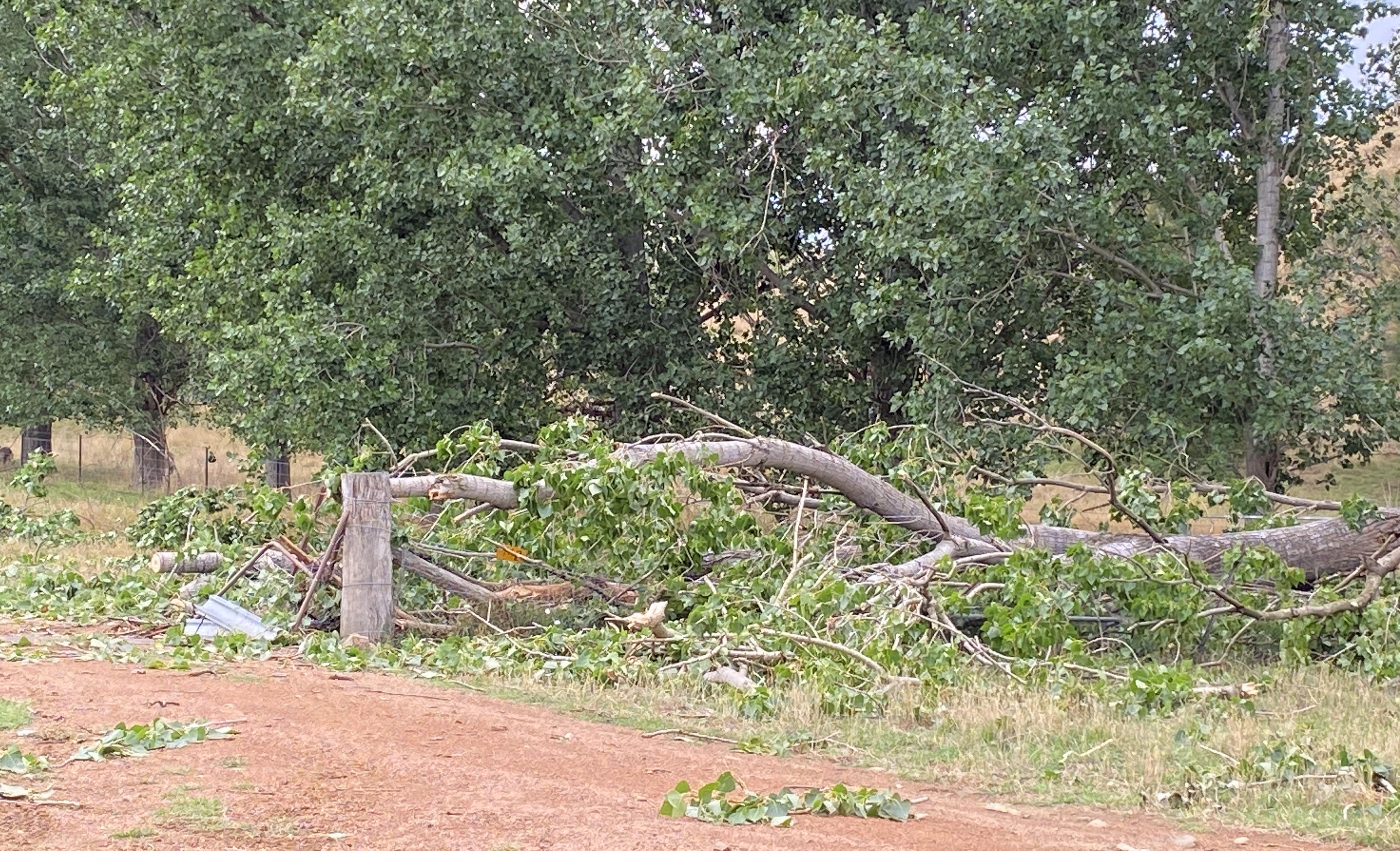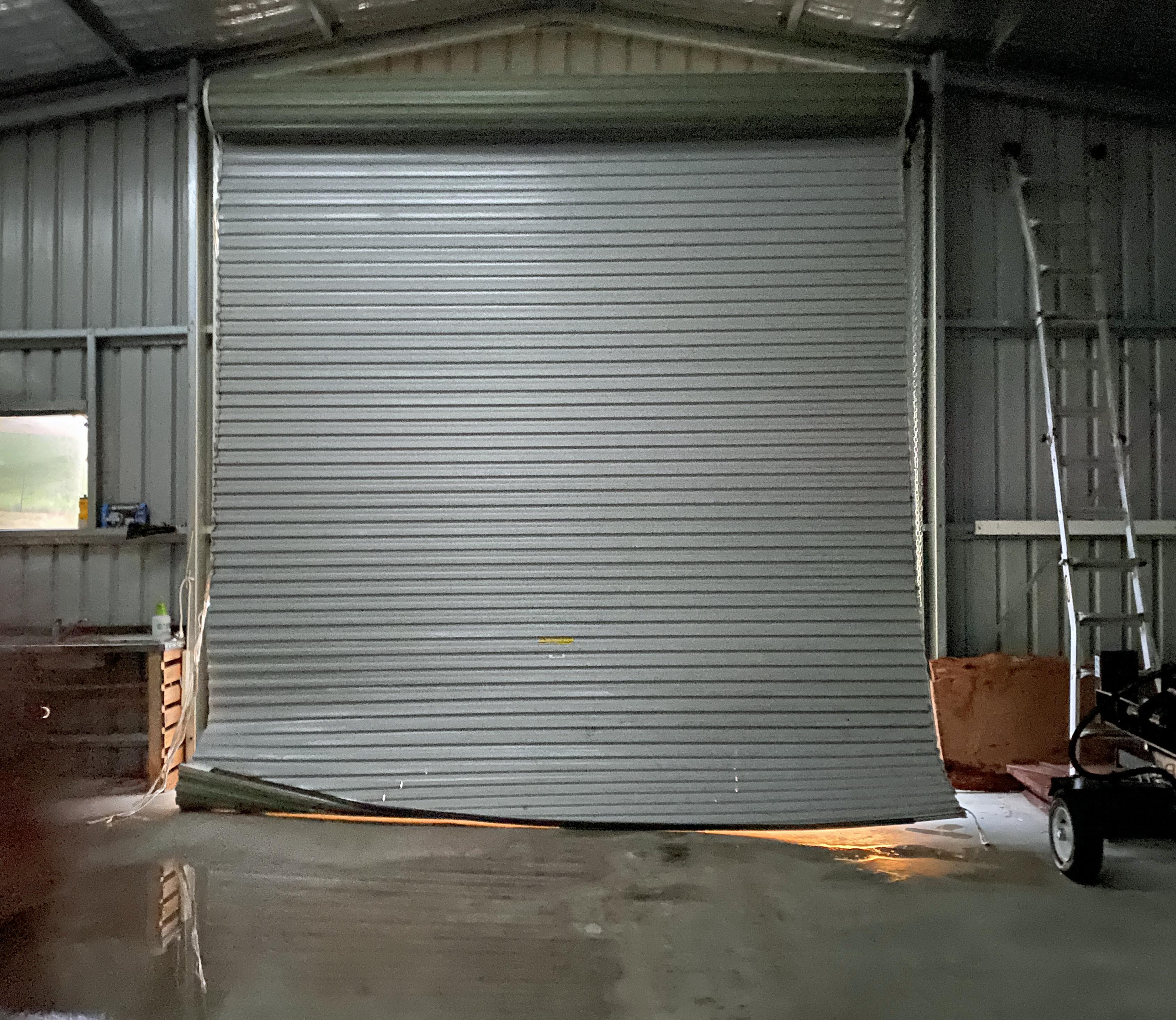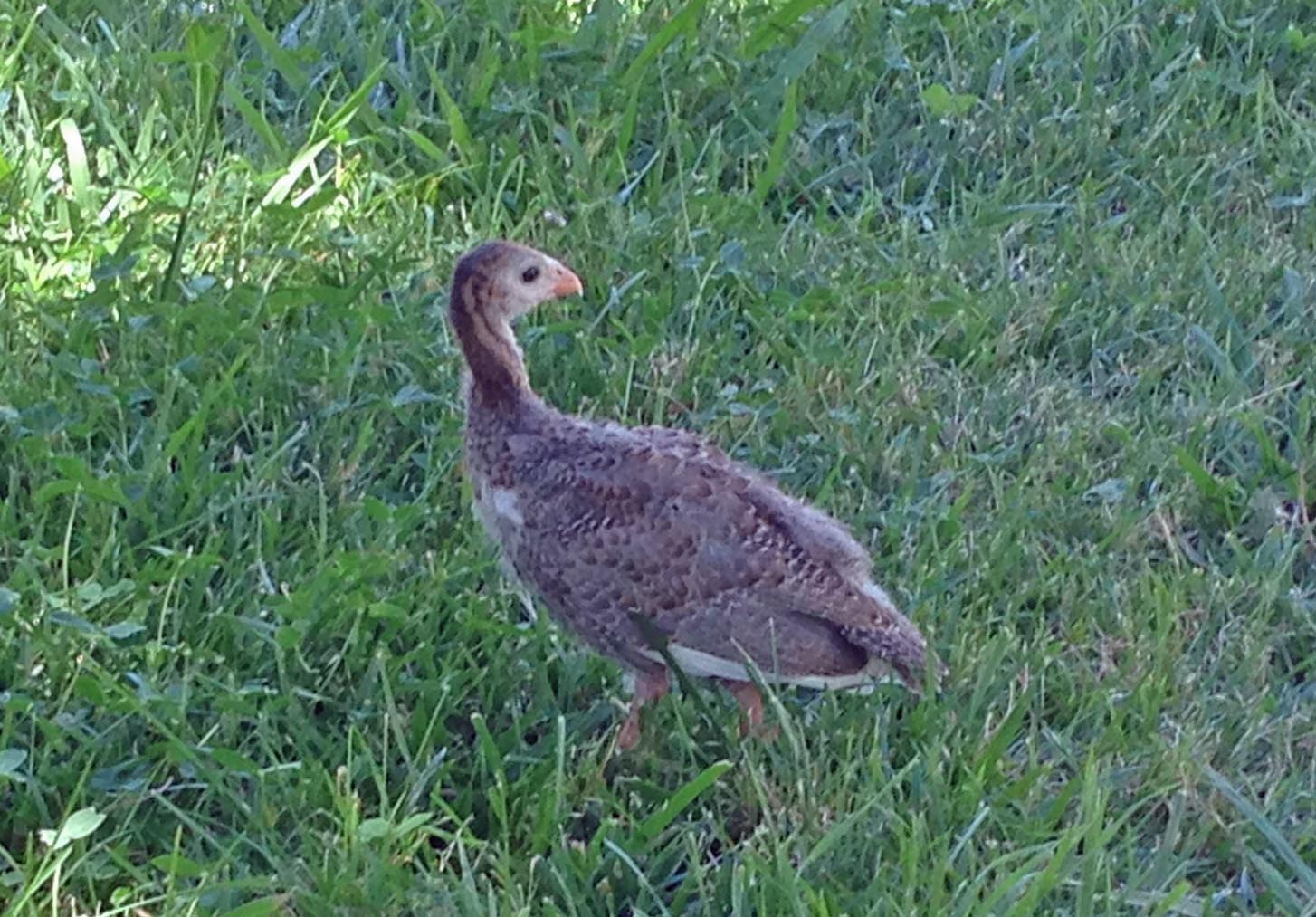In December we got a reminder of what it means when climate change increases the force of a storm. Some evening thunder rolled in as we watched calmly from the verandah. “That seems pretty fierce” Charlie remarked, looking concerned. We soothed him with “Just a summer storm. We get them all the time.”
And then the wind picked up even further. I went to look around the corner of the verandah and was blown backwards, unable to stand. Things began to whip past, blurred in the veil of heavy rain. I realised we were on the only side of the house that was protected from the blast.
Something began to make a loud banging sound, like a huge electrical short. The banging came from the shed down the hill, but Craig yanked me back when I wanted to have a look. There’s no way I would have made it anyway. We realised that many of the flying objects were my tree-planting corflute covers, coming out of the shed and whipping past us.
A few minutes later, the thunder grumbled away and the sun come out, leaving sparkling piles of wreckage everywhere. One of the two big old almond trees in the garden had come down, its branches festooned with my pink, white and black corflute.
For as far as we could see, every big tree had one or more branches ripped away. Luckily only two took out fences as they came down. One of Dad’s poplars laid its whole trunk along the fence and grid leading up to our Mulliondale neighbours. One of my small eucalypts near the road split in half, with some going across the road. Two more big branches fell in the garden, one across the car parking area (smashing part of the carport eaves) and the other onto the back fence.



We were actually lucky. Mulliondale had a lot worse damage, and a whole pine windbreak was shredded further into the hills at the Mullion, while in Canberra the Farmer’s Market shed had five big roller doors ripped away.
We went down to our shed and saw one of our two big roller doors hanging down, thoroughly bent and gaping at the base. Planting equipment had gone flying out the other, open, door and into the garden. The interior of the shed was chaos.




Up at the Mullion the wind speed had been clocked at 137km/hour. Cyclone speed. Fast. Scary.
A severe storm warning did come from the Bureau of Meteorology – after the storm hit us. Apparently online twitterers had a lovely time making wisecracks – wondering if the meteorologists were standing around drinking at their annual Christmas party. Or sleeping it off.
Luckily we had Charlie home to help pick up bits and pieces. Craig taught him how to use the chainsaw and his extra height was great for taking off dangling bits of cypress.
In the little orchard uphill from the house, one of my very failed projects, a guinea-fowl house, had flown away like the guinea fowl did, lodging on its end up against the fence. It wasn’t damaged, being surprisingly well designed. Despite the warnings by several people, back in 2017 I made Craig build it for me out of the shipping crate my piano came in from California.


I thought I could train some guinea fowl to be tame, to lay eggs and to warn us when snakes were around. Instead they constantly acted like I was the biggest threat to them, huddling away and escaping whenever possible. I tried opening the back and they flew up into the trees. After a couple of goes at getting them back (Charles climbing a tree), I gave up on them and let them disappear.



One of our neighbours did manage to keep two guineas that roosted in their garage for several years (making a horrible mess). I asked them how many they started with.
“Thirty.”
So the guinea fowl house was dragged back off the fence, but only so it could become a children’s cubby house of the future.
Three months later, we finally got the last of the massive cypress branches removed. The contractors had to use heavy machinery to drag them out.


For once, I let them take it all away because we already have so many huge piles of storm wreckage to use for erosion control. We have an enormous open space where the tree was, which I’ve started filling with the Silky Oak (grevillea robusta) that Dave Rowell gave us for Christmas. It’ll need a lot more.
The eaves still haven’t been repaired, but the shed door is at least booked in. The process was really slow and showed how awkward it is to get a claim on insurance made, particularly when more than one thing is damaged.
Our neighbour Frank was full of stories of other storms he remembered – including one where the roof of his parents’ kitchen at Tallawong was ripped off, with all the remaining tiles pulled into a circle around the gap. A tornado? In 1987 a wili-wili pulled off the side verandah from Esdale and throwing the pieces onto the other side of the house, while leaving the roses on the north side untouched. Graham Harman, the farm manager, had to crouch in his car while corrugated iron rained down around him. Mum used it as an excuse to extend the house.
We had a similar storm in 2017 that wrenched a red box tree out of the ground and a blew a poplar onto my newly constructed front entry.
It’s a good thing I’d removed two other big cypresses and two big eucalypts that were much too close to the house. This would have been their moment to do horrible damage. It’s definitely easier to prepare for the worst ahead of time, especially in this unpredictable world.
Probably the most annoying damage, after the shed door and the fences, was the broken fence that let hundreds of sheep into my new Box Gum plantings, gnawing off about a hundred of them. I’m sure the sheep were happy, though.


Whoa!
LikeLike
Goodness me. Glad you’re safe!
LikeLike